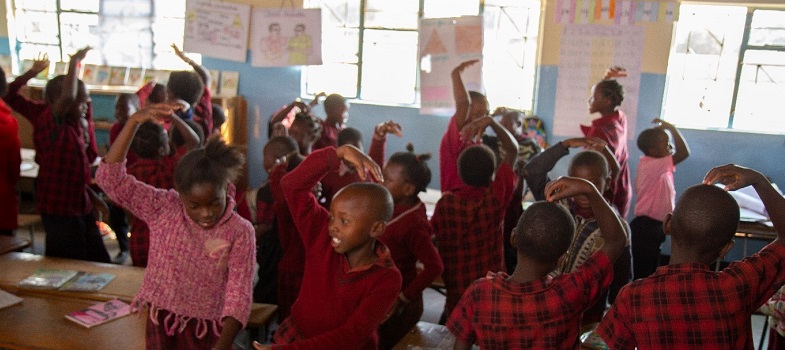Training guide
3. Using group work in your classroom
3.3. TOP TIPS Group work suggestions
Some examples of tasks that work well in groups are:
- Presentations: learners work in groups to prepare a presentation for the rest of the class. This works best if each group has a different topic or focus to avoid repetition when/if they present to the class. Be very strict about the time that each group has to present and decide on a set of criteria for a good presentation. Write these on the board before the lesson.
Learners can use the criteria to plan their presentation and assess each other’s work. The criteria could include:
- Was the presentation clear?
- Was the presentation well-structured?
- Did I learn something from the presentation?
- Did the presentation make me think?
- Problem solving: learners work in groups to solve a problem or a series of problems. This could include conducting an experiment in science, solving problems in mathematics, sequencing a story in English.
- Creating something: learners work in groups to create a story, a song, a model to explain a concept, a news report on an issue or a poster to summarise information or explain a concept. Spending five minutes at the start of a new topic to brainstorm their ideas will tell you a great deal about what they already know.
- Envoys: this involves each group working on a different task. Then, in turn, each group splits up and one or two people from each group move to another to teach them what they have found out or learnt. This has the advantage that everyone in the group has to become an expert.
- Circle of Voices: this involves learners taking turns to speak. Learners are in groups of four or five. Give students a topic and allow them a few minutes to organise their thoughts about it. Then the discussion begins, with each student having up to three minutes to speak. During this time, no one else is allowed to say anything. After everyone has spoken once, students can ask each other questions.
Classroom example 2.3: Exploring SoundsMartha was teaching her Grade 6 class about sound. First, she prepared some resources in order to make different noises. She collected the following:
She organised her 50 students putting them into groups of five to investigate ways to change the sounds made by a range of objects. She gave each group one set of resources (some ‘drums’, five glass bottles with water, four plastic bottles with sand etc.). She asked her pupils to discuss the following two questions in their groups and then carry out investigations to find the answers:
Each group recorded their results on a poster, including any patterns that they found. Martha mixed up the high and low attaining pupils and while she walked around, she checked that the students who find the work more difficult were being involved in the activity. After the activity had finished, she put the posters on the wall and they walked around the room to look at each other’s. She asked them to discuss:
(Adapted from TESSA Primary Science, Module 3, Section 2, Activity 2) |
|
Did you notice...
|
